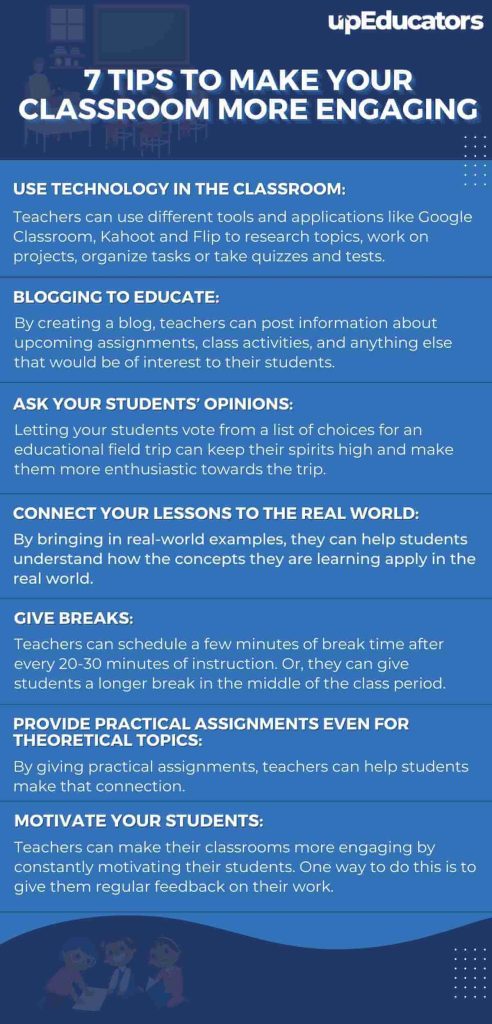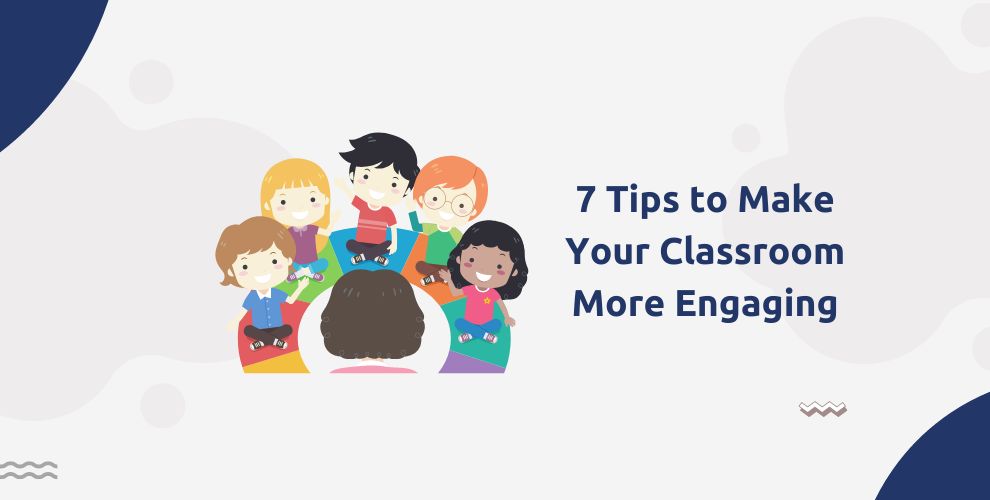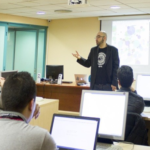Routines can help a learner in building habits. But to get out of your comfort zone, one needs innovative and experimental learning methods. Learning becomes monotonous when teachers refuse to innovate and experiment in the classroom. But how can you as an educator adapt different strategies to make your classroom more engaging?
upEducators has trained 4000+ educators in using digital skills in their classrooms. After talking to hundreds of such trained and experienced educators, our team has found the best strategies for educators to make the classrooms more engaging. So without much further ado, let’s dive into these tips that can help teachers in making learning more interesting.

Use Technology in the classroom
There is no doubt that technology has the potential to make the classroom more engaging. By incorporating technology into lesson plans and using it to supplement instruction, teachers can keep students more engaged in the material. Additionally, technology can be used to provide students with more opportunities to be actively involved in the learning process. For example, teachers can use different tools and applications like Google Classroom, Kahoot and Flip to research topics, work on projects, organize tasks or take quizzes and tests. By using technology in the classroom, teachers can make the learning process more interactive and engaging for students.
Blogging to educate
Blogging is a great way for teachers to engage their students in the classroom. By creating a blog, teachers can post information about upcoming assignments, class activities, and anything else that would be of interest to their students. Additionally, blogs provide a forum for students to ask questions, offer feedback, and engage in discussion with their peers. By using blogs to engage students, teachers can make the classroom a more dynamic and interactive learning environment.
Integrating Coding in the classroom
Coding is the process of creating and programming computer software. It is a valuable skill for students to learn, as it can help them develop problem-solving and critical-thinking skills.
Teachers can make their classrooms more engaging by integrating coding into the curriculum. By teaching students how to code, they can help them develop essential skills that will benefit them in their future careers. Additionally, coding can be a fun and engaging activity for students, which can help them stay motivated and focused in the classroom.
Ask for your Student’s Opinions
Teachers can make their classrooms more engaging by soliciting the students’ opinions on various topics. This gets the students more involved in the material, and also allows the teacher to gauge whether the students are understanding the concepts. Additionally, this can also be a way to get to know the students better and build rapport.
For example, letting your students vote from a list of choices for an educational field trip can keep their spirits high and make them more enthusiastic towards the trip.
Connect your lessons to the real world
By bringing in real-world examples, they can help students understand how the concepts they are learning apply in the real world. This can make the material more relatable and engaging for students. Additionally, this can also help to motivate and inspire students to do their best and to see the importance of their education.
Give breaks
Teachers can make their classrooms more engaging by giving their students regular breaks. By doing so, students will have an opportunity to move around and relieve any built-up energy or tension. Additionally, breaks can help refocus students who may have become distracted.
There are a variety of ways to incorporate breaks into the classroom. For example, teachers can schedule a few minutes of break time after every 20-30 minutes of instruction. Or, they can give students a longer break in the middle of the class period. Additionally, teachers can let students choose when to take a break, within certain limits. For example, students could be given a 2-3 minute break after every 10 minutes of work.
Giving students regular breaks can have many benefits. It can help them stay focused and engaged, and can also reduce behaviour problems. Additionally, it can help students recharge and be ready to learn.
Provide practical assignments even for theoretical topics
Students need to be able to see the relevance of what they are learning in class to the real world. By giving practical assignments, teachers can help students make that connection. For example, in a history class, rather than just having students read about the India’s Freedom Struggle, a teacher could have them research and write a paper about a specific event that occurred during that period. This would help students to see the importance of the Freedom Struggle and its effects on the world today.
Motivate your students
Teachers can make their classrooms more engaging by constantly motivating their students. One way to do this is to give them regular feedback on their work. This way, they can see how they are progressing and what areas they need to work on. Another way to motivate students is to give them opportunities to lead and be involved in class activities. This way, they can feel like they are a part of the classroom and are invested in their learning.
Classroom engagement is important for students of all ages, but it is especially important for younger students. When students are engaged in their learning, the material tends to stick with them longer and they can retain more. Using such hacks can help educators in making their classrooms more fun, engaging, interactive and even effective.
Author: This article is written by Samiya Rashid for upEducators blog.




